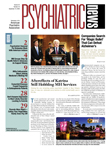The good news is that the number of cancer survivors has steadily increased over the last 30 years. Today there are about 12 million cancer survivors in the United States, representing 4 percent of the population.
The good news is also that many long-term cancer survivors successfully adapt to life after cancer and may even experience psychological growth from having triumphed over their ordeal.
The bad news, however, is that some 6 percent of long-term cancer survivors suffer serious psychological distress, a new study of participants in a major U.S. health survey has revealed. The reasons for the distress include a fear of cancer recurrence, physical deficits due to cancer treatment, and a lack of social support.
The study was headed by Karen Hoffman, M.D., of the Dana-Farber Cancer Institute in Boston. Results were published in the July 27 Archives of Internal Medicine.
The National Health Interview Survey is administered annually by the U.S. Census Bureau for the National Center for Health Statistics, which is part of the Centers for Disease Control and Prevention. The survey is the principal source of information about the health of the civilian, noninstitutionalized American population. Hoffman and her coworkers selected subjects for their study from National Health Interview Surveys conducted from 2002 to 2006.
Their subjects included some 4,600 individuals who had survived various kinds of cancer for five years or more (on average for 12 years) and whose average age was 66 at the time they were surveyed. The subjects also included some 122,000 individuals who had never had cancer and who served as controls.
All of the participating subjects had had their psychological distress levels during the previous month measured with a reliable, validated tool called the K6 scale. It asks six questions such as “I feel so sad nothing could cheer me up,” “I feel that everything is an effort,” or “I feel hopeless.” Subjects answered these questions using a 0 to 4 scale, representing a range from “none of the time” to “all of the time.” Scores for individual questions were tallied to create a total score ranging from 0 to 24, with higher scores indicating more distress. Individuals with a score of 13 or more were considered to be markedly distressed psychologically.
Hoffman and her colleagues looked to see how many of the cancer survivors in their study had experienced marked psychological distress at the time of responding to the survey and how this number compared with the number of control subjects who had experienced marked psychological distress at the time of responding. The answer was 6 percent for the cancer survivors versus 3 percent for the controls—a highly significant difference.
But who were the individuals who made up this 6 percent? Hoffman and her team then examined sociodemographic and clinical information about them to find out. The data revealed that they tended to be unmarried, to have less than a high school education, to be uninsured, to have trouble dealing with activities of daily living, to be younger, and to have comorbid illnesses, such as heart disease, diabetes, emphysema, or kidney disease. Indeed, the combination of younger age and comorbid illnesses placed cancer survivors at particularly high risk of severe psychological distress; 25 percent of those aged 45 or younger with comorbid illnesses experienced severe psychological distress.
These findings have practical implications, Hoffman and her team believe. For example, clinics for cancer survivors might do well to incorporate some mental health professionals into their staffs to help survivors who are seriously psychologically distressed, they proposed.

